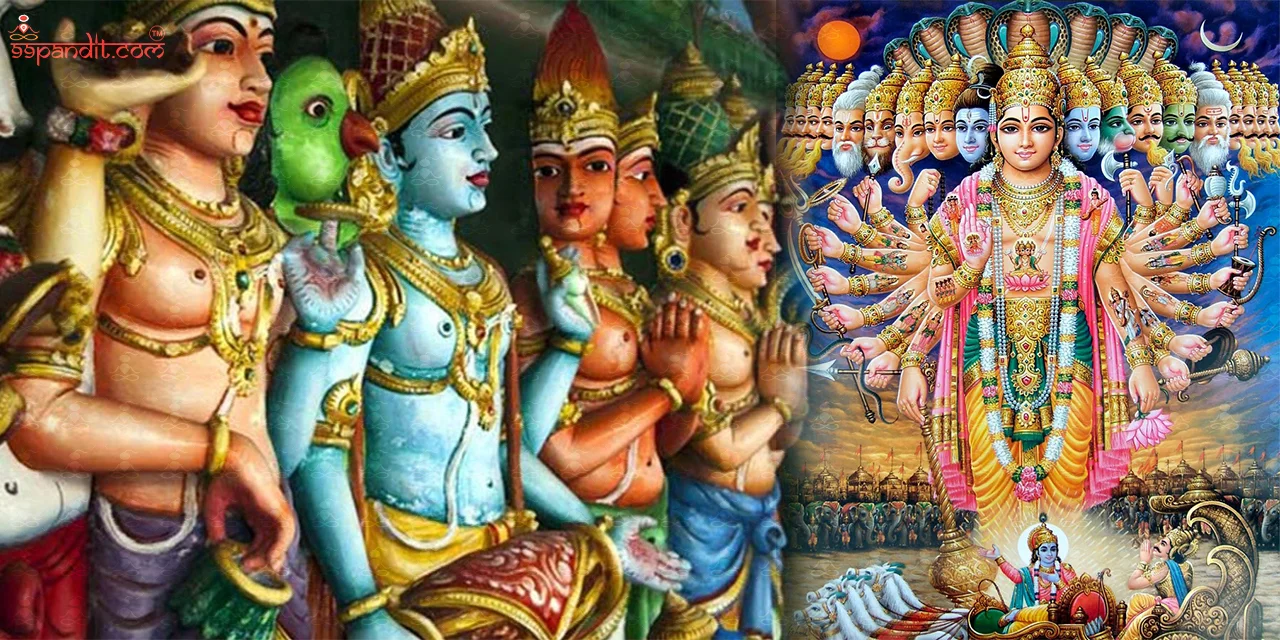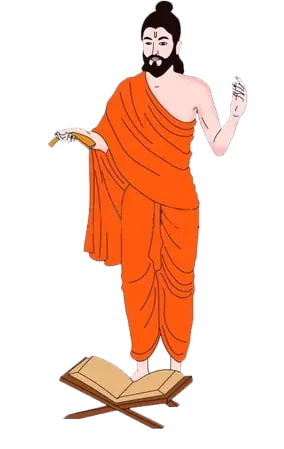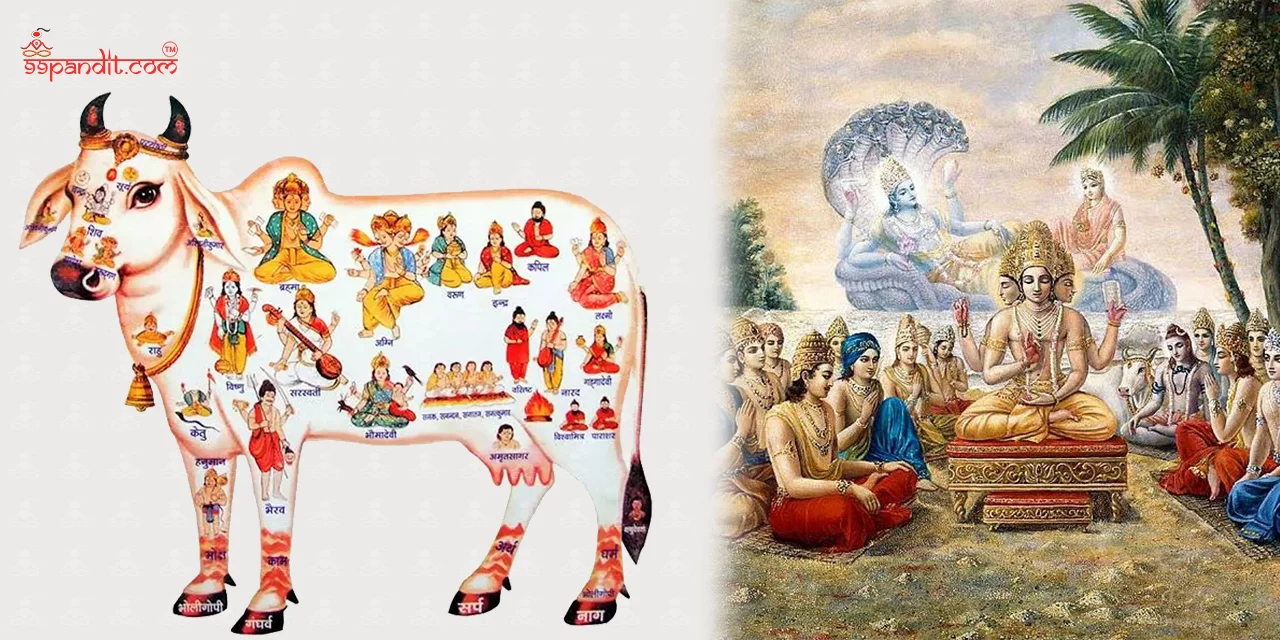Abhimanyu Chakravyuh: How He Entered the Formation & Fought
What does true bravery or courage seem like? As today’s youth are frequently put to the test to overcome their…
 0%
0%

33 Koti Devi Devta: According to the faith of Sanatan Dharma, having 33 crores of gods is a hugely misunderstood thing.
This is connected to a misconception of the Sanskrit word Koti, a fact that overshadows the true significance of Sanatan philosophy.
It recognises 33 categories of divine beings, highlighting the omnipresence of divinity in every form of life and nature.
In Sanatan Dharma, as per the belief in 33 crore deities, everyone has a unique name and form.

This notion, often mentioned in discussions and satire, relies on a misconception of terms. The truth is huge, as the confusion stems from the two meanings of the word koti.
While scriptures offer clarity, the misunderstanding by some has led to the circulation of this myth.
Many elements of this belief to the concept that Hindus revere each aspect as God, terms in the fact of 33 crore devatas. Yet, the truth is more convincing and profound.
In this blog, we will talk about the origins and importance of the 33 koti devi devta in Hinduism to reveal the real meaning behind the concept.
The term 33 koti devi-devta has its roots in ancient Hindu scriptures. Especially the Vedas and Upanishads.
These texts mention the number 33 in terms of divine beings, but the performance of ‘koti’ as ‘crore’ came much later. To know this better, let’s see the key references:
1. Brihadaranyaka Upanishad: This text consists of “33 gods” without using the term “koti.”
2. Yajurveda: It lists 33 deities split into three groups of eleven each.
3. Rigveda: This ancient text also refers to 33 gods in different hymns.
Such early references advise that the original vision was more about 33 certain deities rather than 33 crore.
It is most important to grasp the meaning of the term ‘koti’ in Sanskrit. While it can certainly refer to crores, it also indicates ‘types’ or classifications. In the term of 33 koti devi devta, ‘koti’ represents 33 types instead of 33 crores.
The context of 33 crore gods and goddesses is usually misunderstood. It’s important to identify that this number is not meant to be understood literally.

BOOK TO GET 100% FREE CALL FROM PANDIT TO DECIDE DATE (MUHURAT)

Rather than indicating the infinite forms and incarnation of the divine in Hindu philosophy. Below are some key factors to know:
According to Hinduism, one of the most unique and misunderstood ideas is that of the ‘33 koti devi devta.’
The discussion has led to multiple paths, especially the belief that there are around 330 million gods and goddesses in Hinduism.

While the community is indeed diverse and inclusive of multiple divine forms. This significant idea stems from a linguistic and imperative misconception.
The phrase ‘Koti’ in Sanskrit explains both the meaning of ‘type’ and ‘class’, and even ‘crore’.
Passing the time, Koti was twisted individually in the numerical sense. It drives the belief that there are 33 crore devi devtas in Hinduism.
However, ancient Vedic texts and scriptures like the Yajurveda, Atharvaveda, and Brahmanas state that there are 33 types or categories of deities, not 330 million solely deities.
The concept of 33 Koti Devtas reflects divine principles of nature, cosmic order, healing, and transformation.
Rather than focusing on literal numbers, Hinduism emphasises unity in diversity — many names and forms representing the one Supreme Reality (Brahman).
Let’s check the breakdown of 33 koti devi devtas and explore their importance to better understand the concept:
The 33 Koti deities are classified as follows:
In some scriptures, the two Ashwin Kumar’s substitute Indra and Prajapati among the 33 koti devtas.
The term 33 koti devi devta has deep philosophical importance in Hinduism:
Below are a few popular gods and goddesses in Hinduism:
Goswami Tulsidas Ji stunningly covers the significance of Hindu philosophy in the Ramcharitmanas:
“Siyaram may sab jag jani, karahu pranam jori jug pani.”
Translates to: ‘Understand the entire world to be saturated by Lord Shri Ram. Tuck your hands in worship and bow to all.’

BOOK TO GET 100% FREE CALL FROM PANDIT TO DECIDE DATE (MUHURAT)

The phrase strengthens the belief that lord Shri Ram, a manifestation of lord Vishnu, lies in every being and component of the universe.
The omnipresence shows why every part of life and nature is thought to be divine in Hinduism.
Following the Hindu customs represents reverence for every element of creation:
According to the Shrimad Bhagavad Gita, all living things are home to Bhagwan Shri Hari. Since all life is seen as an extension of the divine, this notion is consistent with the concept of 33 crore divine forms.
Multiple misconceptions around the idea of 33 koti devi-devta:
The idea of the 33 Koti Devi-Devta is still very important in modern Hinduism:

It is easier to appreciate the richness and adaptability of Hindu spiritual practices when one is aware of this idea.
The concept behind 33 koti devi devta, or 33 crore deities in Hinduism, is a fascinating part of ancient religion.
Far from being a literal number of deities, it shows the infinite ways in which the divine can be perceived and experienced.
The history embodies the profound philosophy of unity in diversity, which is central to Hinduism.
We can better appreciate the richness and adaptability of Hindu spiritual practices when we comprehend the actual meaning of the 33 Koti Devi-Devta.
It serves as a reminder that all facets of existence are connected by a unifying principle that lurks beneath the seeming multiplicity of forms and names.
We learn more about a specific religion, as well as the human search for the divine in all of its manifestations, as we continue to investigate and comprehend this rich history.

100% FREE CALL TO DECIDE DATE(MUHURAT)

Table Of Content
Filters by categories
All Pujas
Puja On Special Events
Upcoming Pujas
Dosha Nivaran Pujas
Mukti Karmas
Filters by Trending Topics
Filters by Regions
North Indian Pujas
South Indian Pujas